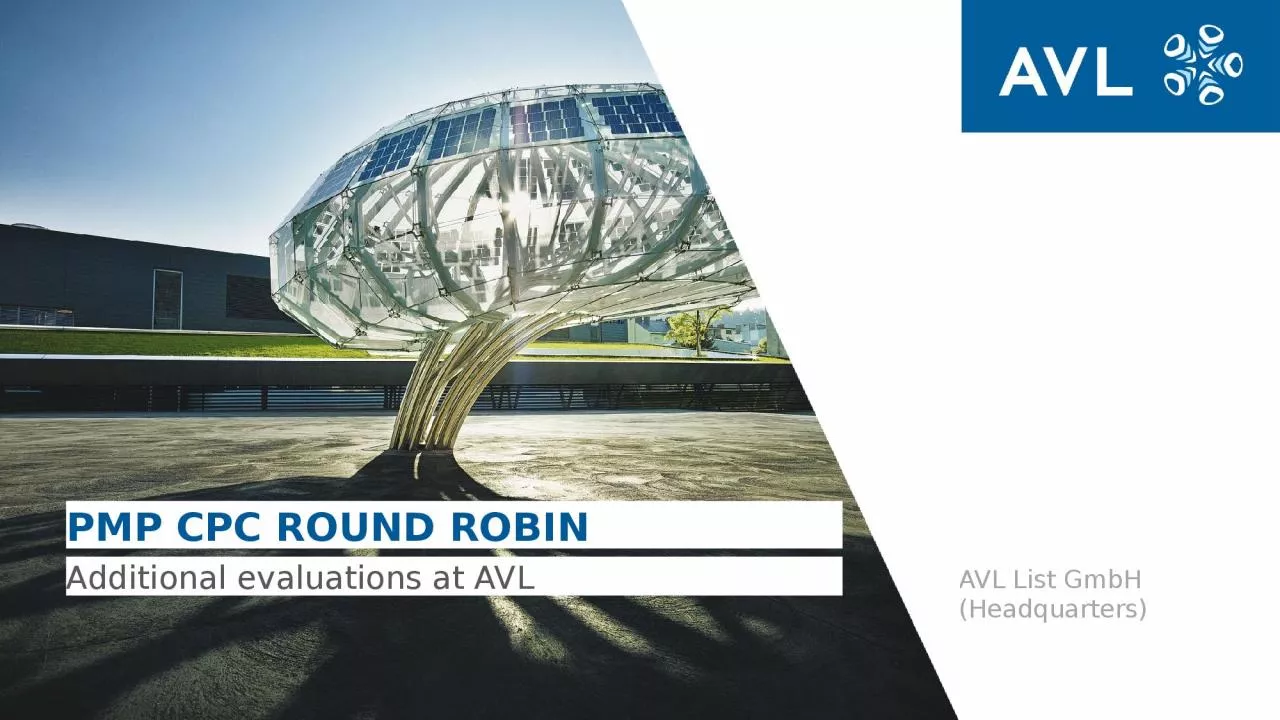

Charging efficiencies Effect of calibration material Instrumentation effects DMA electrometers 10 nm calibrations with miniCAST CONTENT Electrospray Emery Oil Dioctyl Sebacate RR APG ID: 1022218
Download Presentation The PPT/PDF document "PMP CPC Round ROBIN Additional evaluatio..." is the property of its rightful owner. Permission is granted to download and print the materials on this web site for personal, non-commercial use only, and to display it on your personal computer provided you do not modify the materials and that you retain all copyright notices contained in the materials. By downloading content from our website, you accept the terms of this agreement.
1. PMP CPC Round ROBINAdditional evaluations at AVL
2. Charging efficienciesEffect of calibration materialInstrumentation effects (DMA, electrometers)10 nm calibrations with miniCASTCONTENT
3. Electrospray (Emery Oil / Dioctyl Sebacate), RR APG, miniCAST (evaporating tube or catalytic stripper), PALAS DNP3000Tandem DMA Charging efficienciesTwo different types of electrometers were also availableCalibration setup
4. The tandem DMA setup allows for the quantification of double to single charge fractionsCharging efficiencies differ for soot/graphite and oil dropletsISO15900 recommendation was found to lie in betweenSoft X-ray neutralizers yield systematically higher fractions of multiply chargesCharging efficiencies85KrSootMamakos, Aerosol Science & Technology 50:363-372ISO15900
5. Default settings of RR APG led to rather high double charge fractions above 60 nm (>10% of ISO15900 requirement) for calibrations against electrometerThe use of default charging efficiencies was calculated to result in ~ 2% underestimation at sizes above 60 nmCharging Efficiencies Effect85Kr
6. Response for soot and graphite particles distinctly different than for emery oilEfficiency for dioctyl sebacate much higher than any activation theory suggests Chemical effectCalibration material effect
7. Repetition of emery oil tests with different DMA/classifier yielded systematic differencesEffect is more prominent at 23 nm, where the counting efficiency curve is steepInstrumentation Effects - DMA
8. We received a different type of electrometer during the campaignA systematic difference of 8% was observed, which was rather independent of size even if flows were properly controlledInstrumentation Effects - Electrometer
9. Setup:miniCAST burner settings to produced size distribution peaking below 10 nmThermal treatment with Catalytic Stripper to avoid additional dilutionConcentrations at 10 nm registered by the electrometer were ~15000 #/cm3Not optimal settings due to setup (i.e. use of long DMA) and time limitations10 nm measurements
10. Care is required in dealing with multiple charge fractions especially when an electrometer is employed as a referenceImportance of traceable calibration of reference instrumentation: DMAs & ElectrometersOrganic liquid particles show distinctly higher counting efficiency, and there is a clear strong chemistry effect Chemical composition needs to be defined in conjunction with the type of working fluid employedCONclusion
11.